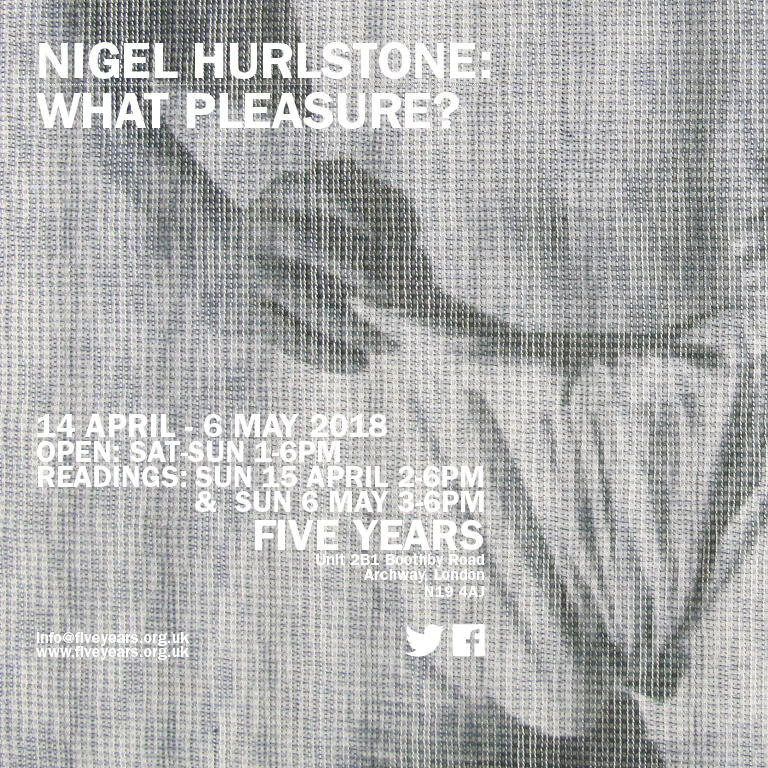
...................................................................................................................................
FIVE YEARS
Unit 2B1 | Boothby Road | Archway, London | N19 4AJ
info@fiveyears.org.uk | www.fiveyears.org.uk | twitter | Facebook
Nigel Hurlstone:
What Pleasure?
14 April - 6 May 2018
Open: Sat - Sun 1-6pm
Readings: Sunday 15 April 2-6pm
Additional Readings: Sunday 6 May 3-6pm
...................................................................................................................................
This work primarily focuses on the translation and re-contextualisation of a single collection of homosexual fetishist snapshots taken between 1910-1950 by the Englishman, Captain Montague Glover. Combinations of embroidered and digital print methodologies have been utilised to release the snapshot from the context of an individuals private pleasure and reveal the historical poignancy and potential universality of the images when they are read both through lens of history, and significantly, through the medium of cloth and stitch.
New iterations between cloth, image and stitch are realised in this work through epic translations of the domestic snapshot on a scale remote from the original artefact. Images are re-printed at human scale rather than the thumbnail gauge of the original, thereby revealing more acutely the sexual display of the model and the detail inherent to their militarisitc ‘costume’ displayed in their state of dress and (un)dress. These individual scenes of fantasy played out in the single frame are re-worked to read collectively as if occupying a stage set. The erotic pose of the models now plays out not in the private realm, but in a deliberately open arena set for collective, rather than individual perusal.
This deliberately brings into the question fundamental issues of how we engage with the erotic image within a public space, and how the medium of cloth can assist in both re-constructing and de-constructing both the aesthetic, content and context of it. Stitch methodologies are employed to deliberately veil the printed image and break the surface of the cloth. The subjects that gaze out at us become embedded in a surface that forces the viewer to shuffle through a reading of the image against a blur of dominant vertical stitched patternation. The photographic time exposure test strip where images recede and advance is deliberately referenced, thereby bringing to the work, not only the presence of the model, but the fetishist at work in the manufacture of his own photographic pleasures.
However, this work also reveals Hurlstone as the maker as much a fetishist at play as the original photographer. The intensly time consuming and intricate handling of the stitch processes utilised in this work involves an intimacy, contact and knowledge of the image that goes far beyond their intial purpose of charging and stimulating a sexual moment. And this knowledge of the image, bought about through the process of stitching, makes for a relationship with that work that is itself simultaneously sexual and overtly voyeueristic, as much as it is based on any technical and aesthetic judgements relating to the production of the final artefacts. The resulting textile is charged with sexual content in new and unexpected ways and is ultimately meant to question what sexual pleasure is, and where and when it might be located.